
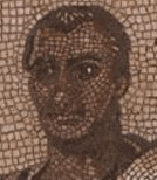
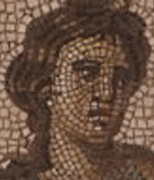
|
|

LATIN [HOME]
AUDIO FILES
LATIN READER
GUIDE & MORE
TO WHEELOCK'S
AUTHORS
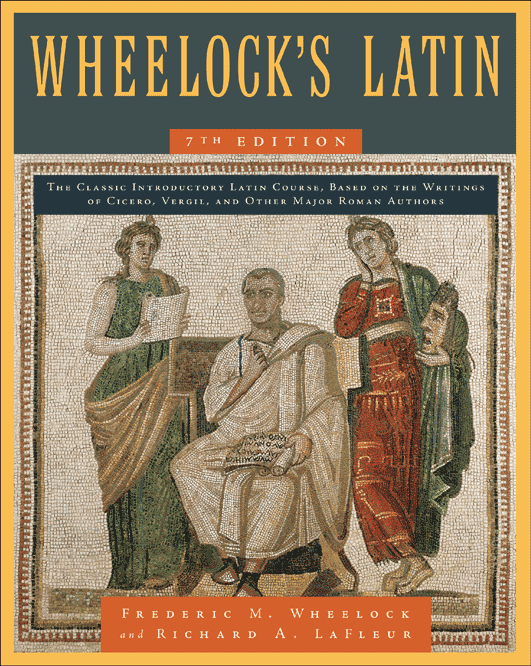 MORE
REVIEWS
MORE
REVIEWS
of Wheelock's Latin
I use Wheelock with my high school students.... We emphasize Latin/English derivatives and vocabulary in general (as a sort of sequencing for AP). And, since the words in Wheelock are derived from authentic ancient texts, the students are in a really good position to approach author-level Latin when they get there. I'm a big fan of Wheelock's Latin vocabulary and a big fan of [the accompanying] flashcards. —Daniel DiCenso, Latin teacher, Seneca High School, Tabernacle, New Jersey http://www.lr.k12.nj.us/site/seneca/
I use Wheelock as a grammar review text for AP students (4th year, ranging from 9th-12th grade), alongside their intensive Cicero/Catullus readings. They first spend 3 years in the Cambridge Latin Course. They love Wheelock -- helps them consolidate a lot that they have learned but not organized, as it were. —Karen Zeller, Homesource School, Eugene, Oregon.
Since its appearance in 1956, Frederic Wheelock's introductory Latin text has remained the standard in the field, a classic in its own right. I myself have used this work for over twenty years: as a high school freshman and again in college; for review and reference in graduate school; and now as my textbook of choice as a professor of Latin. Its basic premise remains as sound as ever, namely that the optimal way to learn classical Latin is to read the best ancient authors as soon as possible. The focus on real classical Latin, as well as the emphasis on the philosophical and literary culture of the Roman world, has made this text not only a primer of the Latin language, but also a fine introduction to classical humanism and a cornucopia of ancient authors.
Over the years, the various editions, first prepared by Wheelock himself and then by his able successor, the eminent classicist Richard LaFleur, have preserved the genius of Wheelock's vision, while making improvements based upon the suggestions of generations of colleagues and students. The sixth edition is still made up of 40 chapters with translation exercises, additional sections of self-tutorial exercises with answer keys, extended selections of ancient authors for further reading, appendices containing summaries of grammatical forms, a glossary, and grammatical index. However, recent editions have seen refinement and expansion of grammatical explanations, the use of larger print, more readings in continuous Latin within the chapters themselves, and helpful sections on English etymology and Romance language derivatives. In response to the needs and expectations of contemporary students, an enjoyable and helpful section containing informal discussion of familiar Latin phrases et alia has been added to each chapter, entitled Latina est gaudium et utilis (Latin is fun and useful).
The new sixth edition continues the tradition. A fine color reproduction of a mosaic of Virgil and his muse now graces the cover. Many photographs of classical and later European art have been added to the individual chapters, reflecting a theme from history or mythology illustrated in the chapter readings. Three new maps, of ancient Italy, Greece and the Aegean, and the Roman empire, respectively, have been specially designed to include Latin names of places mentioned in the various readings. Many of the practice exercises have been revised to better integrate recently-learned vocabulary and syntax, and the English-Latin vocabulary section of the glossary has been expanded.
All of these changes are welcome because they strengthen the core of Wheelock's Latin, namely, the selections from ancient authors. The Sententiae Antiquae in each chapter present sources of classical wisdom with accompanying translation exercises and introduce the student to the best authors. Furthermore, LaFleur has amplified the already wide range of prose and poetry selections in the chapter readings. While Cicero, Horace, and Catullus still remain at the center of the text, the witty epigrams of Martial, Trimalchio's teary-eyed comic recitation of his epitaph from Petronius' Satyricon (266), and Seneca's satirical description of the Emperor Claudius' "excremental expiration" (241) are just a few examples of the variety of authors and genres. This wide selection, along with the fine survey of Latin literature found in the introduction, provides students of many needs and backgrounds with an excellent grounding in Roman literature and culture.
The second edition of a Workbook for Wheelock's Latin is most welcome, although it must be said that the textbook itself already contains more exercises than one can use in an average college course. The workbook repeats much of what is already found in the self-tutorial exercises, but arranges the material in ways more pedagogically helpful and aesthetically appealing. The exercises are designed not only to test vocabulary and grammar, but also to ask questions requiring students to think about the grammar they are learning. The workbook also does not include the answers, an important consideration when assigning exercises for classroom and home use! The pages of the workbook can be easily detached, and thus easily collected. The authors are to be congratulated for producing a workbook so well integrated with the text. Selectively used, it can enhance student understanding of grammar and provide helpful review material.
For those long familiar with Wheelock's Latin, the new edition shows the continuing vitality of a venerable pedagogical classic. Likewise, those Latin teachers who remember only the earlier editions may want to take a fresh look at what will undoubtedly continue to be an important introductory textbook for new generations of Latin students. –Dr. William Hyland, Assistant Professor of Classics, St. Norbert College, reprinted with permission of The NECTFL Review.
WHEELOCK AND COMMUNICATIVE TEACHING
I was given a set of Wheelock's 6th edition at a recent ACTFL conference and I was reading the Foreword, written by Professor Wheelock's daughters. I quote: "When students needed to learn grammar, they read lessons and literature from the great ancient writers who used the grammar in a meaningful context. Our father sought to graft the vital flesh and blood of Roman experience and thinking onto the basic bones of forms, syntax, and vocabulary; he wanted students to transcend mere gerund grinding by giving them literary and philosophical substance on which to sharpen their teeth."
I then picked up my old first edition (the 1957 reprint of the College Outline Series edition) and read Wheelock's own remarks: "It can hardly be disputed that the most profitable and the most inspiring approach to ancient Latin is through original Latin sentences and passages derived from the ancient authors themselves. With this conviction the writer perused a number of likely ancient works excerpting sentences and passages which could constitute material for the envisioned beginners' book. A prime desideratum was that the material be interesting per se and be not chosen merely because it illustrated forms and syntax."
Now, my question is: how did we get so far from these principles of communicative teaching, so well stated, to the memorization of forms and drilling of forms and memorizing of vocabulary lists and so on that make up the bulk of some teachers' course work and of so many textbooks besides Wheelock?
Note that when Wheelock himself says "Repetitio mater memoriae" (p. x of 1957 ed.), he doesn't mean that students must simply repeat a given word over and over in a kind of drill pattern but rather, in his text, "great effort has been made to secure its repetition in the Sententiae Antiquae or in the Practice and Review of a number of the immediately following chapters, as well as elsewhere in the rest of the book."
This is what any good communicative teacher does. --Pat Barrett, Westwood High School, Mesa, AZ
WHEELOCK AS THE IDEAL PRE-AP TEXT
An interesting question has come my way again. It has two parts:
- Knowing that your capstone class will be AP Latin, what textbooks do you use in Pre-AP classes to prepare students for success on the exam a couple of years down the road?
- Why did you choose that one?
* I use Wheelock’s Latin supplemented by Groton & May’s Thirty-Eight Latin Stories… and Scribblers, Sculptors, and Scribes (especially for the inscriptions/graffiti and the supplemental literature). This is the backbone of Latin 1, 2, and the first semester of 3. After that, we read whatever student interests dictate in the second half of Latin 3 and in Latin 4 Honors: it’s a mix of ancient, medieval, and modern Latin sources both poetry and prose.
* I have chosen Wheelock as my basal text because I have found nothing that gets the kids to comprehending and analyzing unadapted Classical authors as quickly and efficiently; I no longer have any of the problems of “making the transition” from my chosen basal text to unadapted authors. --Michael B. Myer
CATHY DUFFY'S HOMESCHOOL REVIEWS
The Official Wheelock's Latin Series Website is sponsored by Martha Wheelock, Deborah Wheelock Taylor, Richard A. LaFleur, and HarperCollinsPublishers (www.harpercollins.com) to publicize not only the Wheelock's Latin Series but also related materials from HarperCollins and other publishers and websites. Last updated October, 2021. This site was designed by Ginny Lindzey and Richard A. LaFleur,
and is administered by Kay Stanton. For technical questions
on the functioning and management of this website, or suggestions
for additional links for our Links page, please contact support
at webmaster@wheelockslatin.com. |
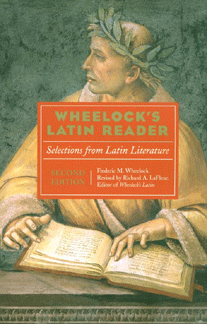 Wheelock's Latin Reader
Wheelock's Latin Reader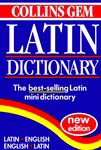 Collins
Gem Latin Dictionary
Collins
Gem Latin Dictionary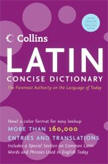 Harper
Collins Latin Concise Dictionary
Harper
Collins Latin Concise Dictionary